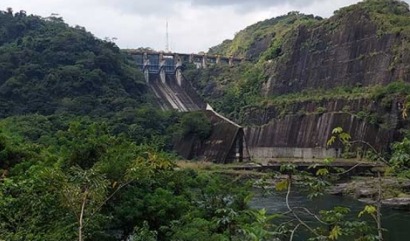
As the world’s largest source of renewable energy generation and storage, hydropower has underpinned industrial development in many of the world’s most advanced economies, while also strengthening water management. Most of the untapped hydropower potential that remains today is in developing regions and this is where the Bali Statement urges for more changes and investments to take place.
“The industrial revolution was powered by water. Water, wind and sun together will power the sustainable growth of the future,” is the key message of the Bali Statement, which following an open public consultation, has provided four recommendations to policymakers to ensure this necessary collaboration can take place:
1. Planning for future energy needs. With more variable renewables like wind and solar power in use, decision-makers must work together across boundaries where necessary, to identify the most optimal overall mix of low carbon renewable energy technologies to enable sustainable development.
2. Incentivizing sustainable hydropower development through financial and market-based mechanisms. To meet Paris Agreement aims and the UN Sustainable Development Goals, the IEA estimates that investment in hydropower needs to double to $100 billion a year, while the fleet of existing assets must be retained and enhanced. To make this happen, hydropower must be on a level playing field with other renewables. Decision-makers should implement appropriate market frameworks to incentivize and de-risk new hydropower investment and modernization activities in order to meet climate targets, including remuneration for the non-energy services provided by hydropower projects.
3. Accelerating the development of renewables through transparent and efficient permitting and licensing processes. Hydropower planning and approval processes typically take more than five years before new projects and substantive modernisation activities can even begin construction. Meanwhile, the default option is often to fall back on fossil fuels. This licensing process must be accelerated by improving the efficiency of these processes wherever possible without compromising sustainability.
4. Incorporating hydropower sustainability practices into government regulation and financial sector obligations. Accelerating development does not mean cutting corners. Application of best sustainability practices, built and governed through multi-stakeholder consensus such as the Hydropower Sustainability Standard, should be either integrated into regulatory frameworks or referred to as a preferred tool to maximize the benefits of projects and mitigate any negative impacts.
The Bali Statement on Powering Sustainable Growth follows on from the global hydropower community’s reaffirmed commitment to the sustainable development of projects through both the adoption of the San José Declaration on Sustainable Hydropower and uptake of the Hydropower Sustainability Standard.
“Reaching net zero is not about 'stop the world, I want to get off'. There doesn't need to be a trade-off between growth and cutting emissions. Countries, like Indonesia and mine – Australia – whose industries have been heavily reliant on coal, can have a clear path to continued growth.
"The Bali Statement on Powering Sustainable Growth sets out what this Congress sees as priorities for how to go about that. What the Statement makes clear is that the energy transition will not be possible without sustainable hydropower as the backbone of future energy systems,” said Malcolm Turnbull, IHA President.

